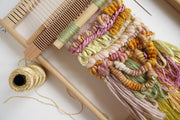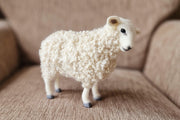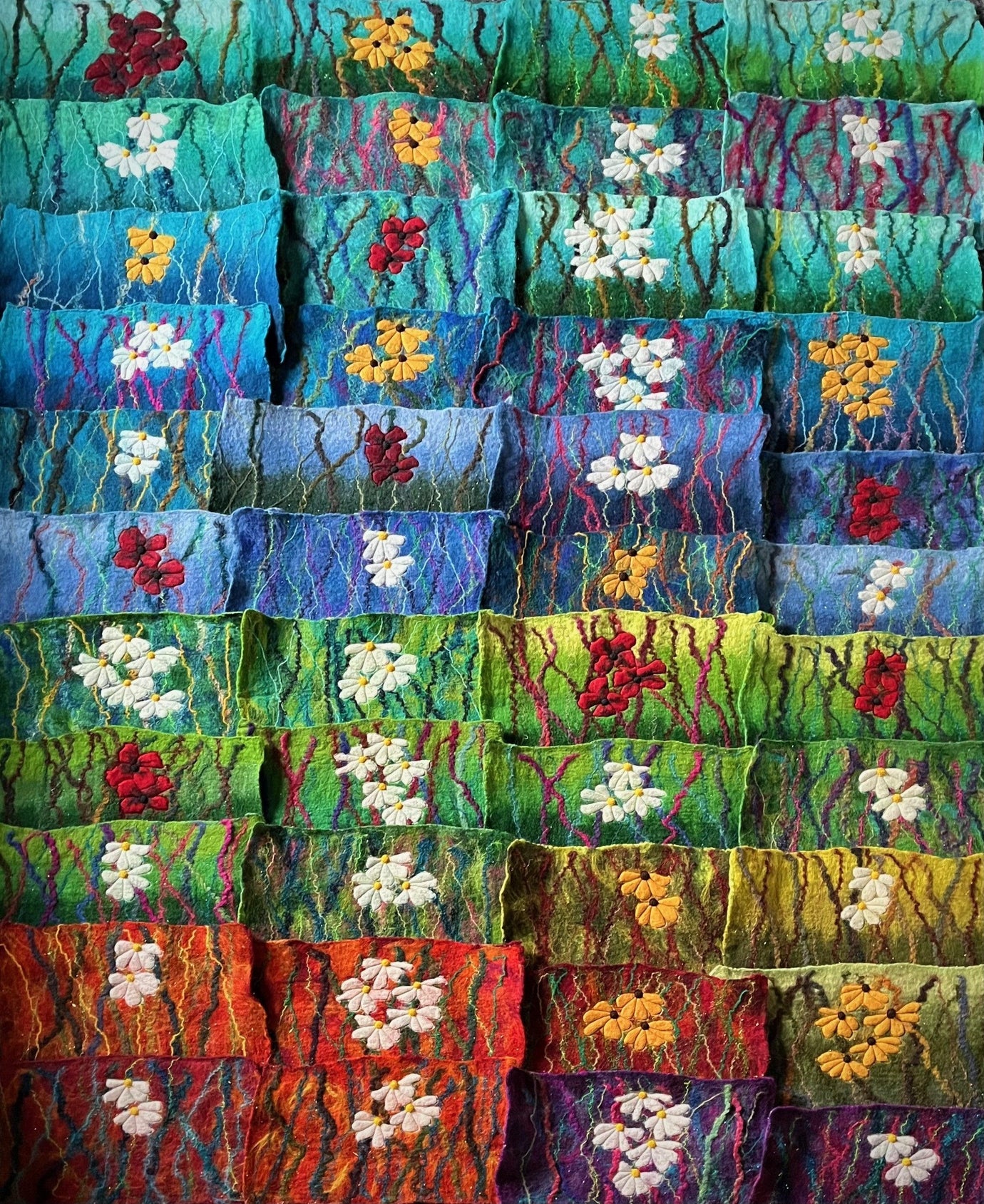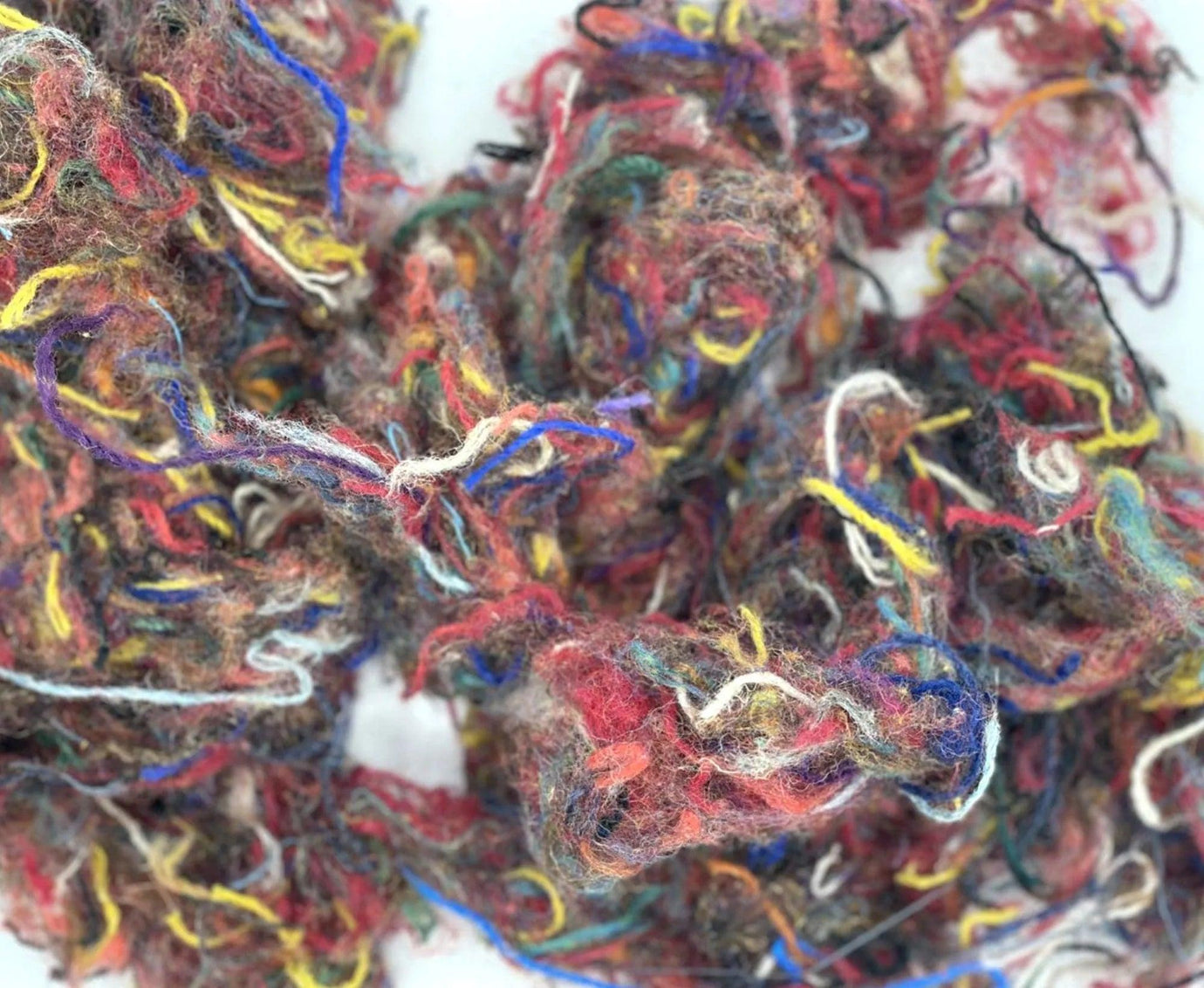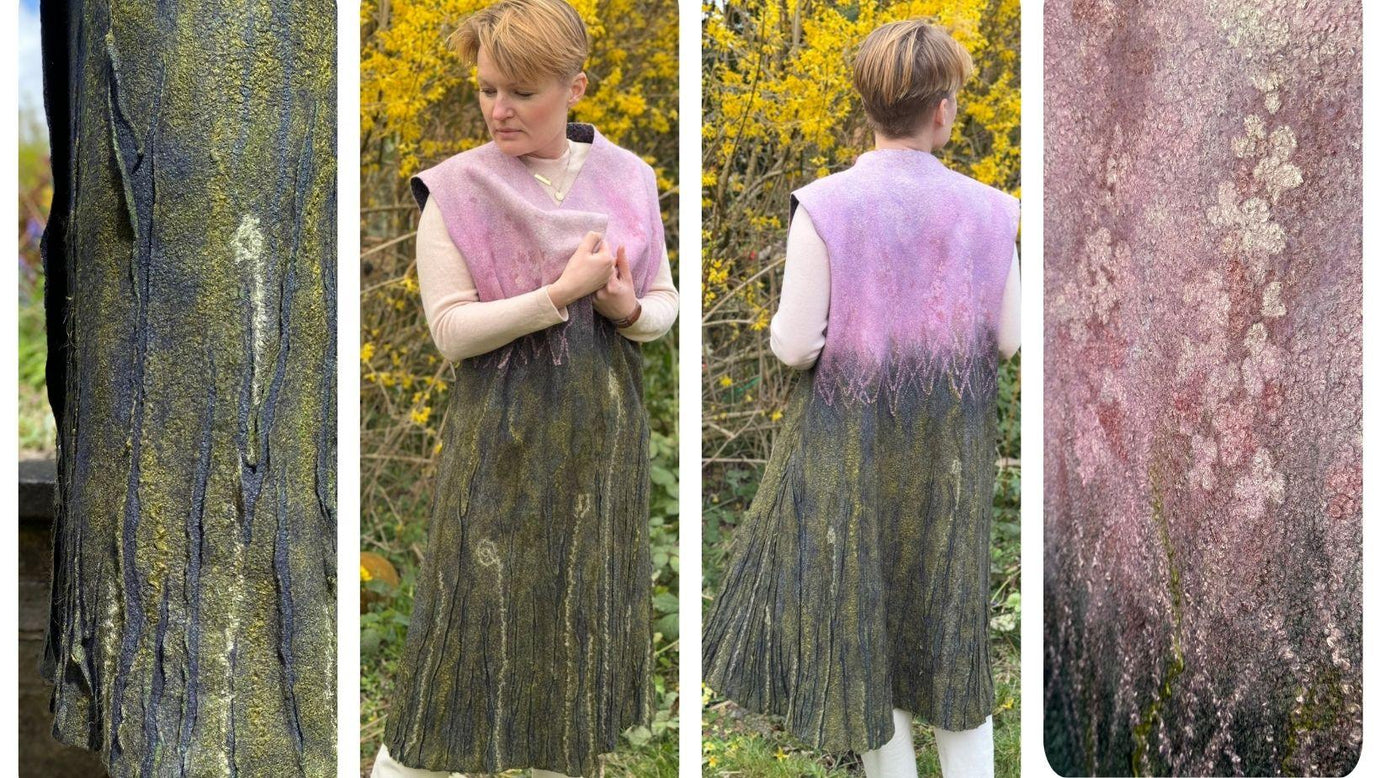A Guide to: Felting Needles
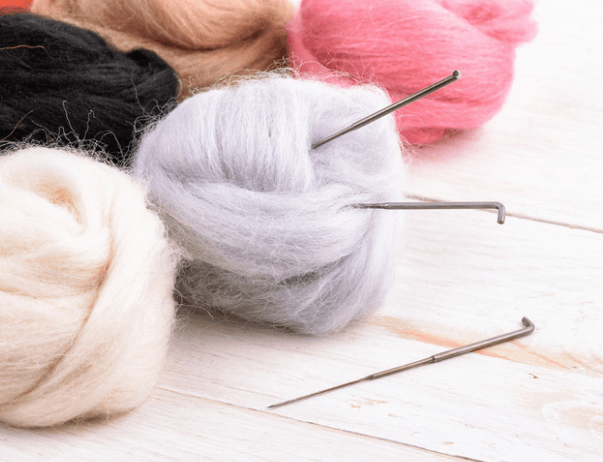
Needle felting or 'dry felting' as it is sometimes called is a cathartic craft which involves sharp needles, wool and more than a bit of stabbing. The needles can be used to created 2D pictures and 3D sculptures as well to add detail to wet felted pieces and help in the mending and also finishing (steeking!) of knitting projects. But with all the choice, how can you be sure you're using the right needle for the job? Read on, and we'll give you a hand.
Gauge
The gauge of the needle represents the thickness; the higher the number the finer the gauge. Fine needles are great for detail work and for smoothing out areas that have been felted with heavier needles - a little bit like using sandpaper!
19 gauge - Our heaviest gauge, best used for very coarse wools that are more tricky to felt such as Swaledale.
20 gauge - Slightly finer than the 19 gauge but still used for very coarse wools.
32 gauge - Used for medium-coarse wools such as Jacob.
36 gauge - Our workhorse gauge which is a Jack-of-all-trades. Versatile for most fibre types and the one we recommend for beginners.
38 gauge - One of the finer gauges that is useful for smoothing and shaping work to add more detail such as muscle structure in 3D work.
40 gauge - Our finest gauge, good for doing fine detail such and finishing.
For finer wools, you want to use finer needles. Heavier-gauge needles will leave visible holes which will make your work harder to finish. We suggest using no heavier than a 36 gauge for fibres that are 23mic or finer (eg. Merino & Superfine Merino)
Shape
We carry five different shapes of needles and each has its own specific use to help achieve a specific effect or finish. If you're just starting out with needle felting, you don't need to buy every needle, you may find that your projects only call for one or two types.
Crown - Useful for delicate felting such as adding hair. Can also be used to firm up a felted surface.
Reverse - Used to create a fur or fluff effect, this needle will pull fibre backwards as it is being felted.
Star - For speedy felting, the star-shaped needle has more edges and barbs which helps to felt faster.
Triangular - The standard needle shape which can be used for all general needle felting
Twisted/Spiral - Twisted needles have more barbs and their shape allows you to felt more quickly with a finer finish
Identification
Our needles come pre-packed in tubes with colour-coded ends so you know which needle is while. Our colours are:
White - 19 gauge triangular
Brown - 20 gauge reverse
Orange - 32 gauge triangular
Black - 36 gauge triangular
Grey - 36 gauge twisted/spiral
Yellow - 38 gauge crown
Blue - 38 gauge star
Green - 38 gauge triangular
Florescent yellow - 40 gauge reverse
Red - 40 gauge triangular
You can find our full range of felting needles online here. Needles are available individually, in packs of 10 or packs of 50. If you want something to get you off the ground, have a look at our Felting Needle Essential pack. It contains what you need to get started!


